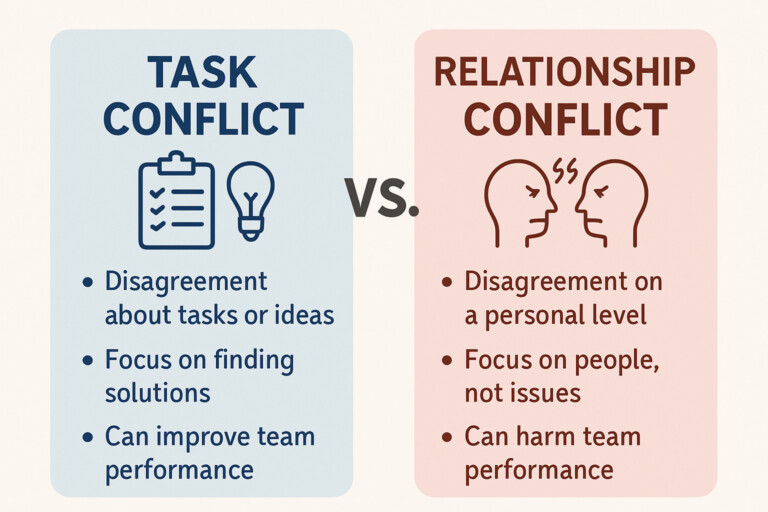What is 360 degree feedback? Or more importantly, how can I start giving more effective feedback?
In business, giving constructive criticism can be difficult and if you’re not doing it right it can hurt performance.
For experienced leaders, 360 feedback can be a helpful check-in tactic to use within your team. However, leaders often get hung up on the process and approach, it doesn’t have to be!
I’m going to share a quick how-to guide without all the confusion so you can give effective feedback and get immediate results.
Jump To Section
What is 360 Degree Feedback?

The 360 degree technique is a method of assessing an individual’s performance by obtaining input from multiple sources. The feedback can be anonymous and may be provided by peers, subordinates, supervisors, subordinates, and others that interact with the individual in their capacity as a leader.
The term “360 degree feedback” refers to the fact that those providing the feedback can come from all directions: up, down, left, and right.
Have you ever been in a situation where you’re asked to give an honest review of your manager, or team member? This is known as 360 degree feedback and it can be challenging. If you’re like most people, you probably gave the feedback but thought to yourself that you wouldn’t want to hear what you said!
What Makes 360 Degree Feedback Assessments Different
The 360 degree feedback process is different from other employee review processes because it offers a more comprehensive view of an employee’s strengths and weaknesses.
Also, the 360 degree feedback process provides the leader with broader information that can be used to help the employee grow and improve in the future, so it is helpful for both parties involved.
Furthermore, the 360 degree feedback process, also called multi-rater feedback, involves soliciting input from co-workers, bosses, customers, and even subordinates about an employee’s performance. This type of feedback is given in writing or online and can be anonymous.
The evaluation allows a supervisor to gauge how an employee’s actions are perceived by others and provide constructive criticism that can help him or her improve his behavior or work style.
How to Give Solid Feedback

The purpose of giving someone feedback is not to hurt their feelings. It is to help them improve, so the best way to go about it is to tell people what they did well first and then, only if they were doing something wrong, talk about how they can improve.
Telling someone all the things that are wrong with them will often just make them defensive and may cause them to tune you out. However, if you put it into a framework like the one below it will make it easier for the receiver to hear what you are saying and be able to understand why you are telling them something.
1) Describe the situation – provide context for what happened.
2) What was good about this situation?
3) What was challenging about this situation?
4) What did you do that helped you overcome the challenge?
5) What could you have done differently?
6) How will this affect future situations?
7) Any other thoughts on this situation?
If you want your feedback to be heard, try putting it into a framework like this!
360-Degree Feedback Examples
To better understand how 360-degree feedback works in practice, here are some examples of feedback that might be given in different scenarios:
- Peer-to-peer feedback:
“Sarah consistently demonstrates strong problem-solving skills in team meetings. Her ability to break down complex issues and propose practical solutions has been invaluable. However, she could improve on actively listening to others’ ideas before presenting her own.” - Subordinate-to-manager feedback:
“John is an approachable manager who always makes time for his team members. His open-door policy creates a positive work environment. One area for improvement could be providing more specific guidance on project expectations to avoid misunderstandings. - Manager-to-employee feedback:
“Emily has shown exceptional leadership in managing the marketing campaign. Her ability to coordinate multiple teams and meet deadlines is commendable. To further enhance her effectiveness, she could work on delegating tasks more often to develop her team members’ skills.” - Cross-departmental feedback:
“Alex from IT consistently provides prompt and effective support to our finance team. His technical expertise and patience in explaining complex systems are greatly appreciated. One suggestion would be to provide more documentation or training materials for frequently encountered issues.” - Self-assessment:
“I believe my strengths lie in project management and attention to detail. I’ve successfully delivered all my projects on time this year. However, I recognize that I could improve my public speaking skills to present our team’s achievements more effectively in company-wide meetings.”
These examples demonstrate how 360-degree feedback can provide a well-rounded view of an individual’s performance, highlighting both strengths and areas for improvement from various perspectives within the organization.
Sample 360 Degree Feedback Questions

Section 1: Communication
- How well does the individual communicate with colleagues and team members?
- Does the individual listen to and understand others’ perspectives?
- How clear and concise is the individual’s communication style?
- Does the individual provide constructive feedback to others in a respectful manner?
- How well does the individual handle conflicts or difficult conversations?
Section 2: Leadership
- How well does the individual lead and motivate their team?
- Does the individual set clear goals and expectations for their team?
- Does the individual provide guidance and support to team members?
- How well does the individual handle conflict and difficult situations?
- How well does the individual manage their team’s performance?
Section 3: Collaboration
- How well does the individual work with others outside of their team?
- Does the individual actively seek out opportunities to collaborate with others?
- How well does the individual contribute positively to team dynamics?
- Does the individual respect and value the opinions of others?
- How well does the individual work with people from diverse backgrounds?
Section 4: Personal Effectiveness
- How well does the individual manage their time and workload?
- Does the individual take ownership of their work and responsibilities?
- How well does the individual adapt to changes and challenges?
- Does the individual seek out opportunities for professional development and growth?
- How well does the individual handle stress and pressure in the workplace?
Section 5: Job-Specific Skills
- How well does the individual perform in their specific job function?
- Does the individual possess the necessary technical skills for their role?
- How well does the individual manage projects and deadlines?
- Does the individual contribute to innovation and process improvement?
- How well does the individual align their work with the goals of the organization?
Feel free to customize this list based on your specific needs and goals.
Why is Feedback Important?
Feedback is essential to help the employee improve on what they are already good at and work on the areas that need improvement. 360 degree feedback gives an employee a chance to know themselves better and improve their skills. It increases trust and confidence in the employees and helps them in taking timely corrective action toward their goals.
Benefits of 360 Degree Feedback

Research shows that organizations with effective employee performance appraisal processes are more successful than those that don’t have them. Managers who only rely on their impressions of how well employees are performing can overlook important issues, which leads to lower productivity and staff turnover rates.
By including other employees in the evaluation process, organizations can ensure that every employee has honest feedback that will help them improve their performance and further the interests of the organization as a whole.
Some of the many benefits of these performance reviews include:
- Improving morale
- Helping employees understand their strengths and weaknesses
- Encouraging employee development
- Making your company more attractive to talent
Cons
The biggest problem with this type of critique is that it may not always be accurate or completely honest. Coworkers may feel pressure to give their peers high scores because they need to maintain a good relationship to get things done.
In addition, the person doing the critiquing may not be entirely honest about how they feel about a particular issue or topic because they don’t want to hurt anyone’s feelings or they don’t feel that it’s their place to voice their opinion.
Finally, poor managers often use these types of evaluation tools as an opportunity to harass their subordinates instead of giving them constructive criticism.
Tips for Effective Feedback

Candid, constructive feedback is vital to improving performance. 360 Degree Feedback is a valuable tool that can be used to improve performance and empower employees to improve themselves. Read on for tips on how to give effective 360 degree feedback to help your team members excel.
For 360 Degree Feedback to be effective, all participants must be clear on what they are supposed to do and what they can expect. You can accomplish this by providing the following directions at the beginning of the process:
- How you will use the results?
- What are the objectives of this program?
- Why have we chosen this method?
- What are some things my manager expects from me?
- What do I need to do for this method to work for me?
Give praise first.
As with all forms of feedback, start with positive observations. Don’t build the person up only to tear them down later. Tell your employee what they have done well and what they do consistently, then move on to the areas where they could improve.
Use examples.
When providing feedback, it’s best to use examples whenever possible. This makes it easier for the person receiving feedback to understand exactly what you mean and how their actions affect others around them. Make sure you give enough information that the person understands what you mean by “you were late for meetings,” or “you were rude toward a client.”
Make the feedback process a priority.
A lot is going on in the business. It’s easy for 360 degree feedback to get pushed to the side. You have to make time for it and schedule meetings with employees who have been nominated for this type of feedback. If you’re not giving enough time and attention to the process, then you’re not going to get accurate results.
Don’t make it personal.
The purpose of a 360 degree assessment is to help team members become better at their jobs. Although you may be a part of the process, you need to keep your personal feelings out of it. If an employee is lacking in a certain area, they must know how they can improve, so they don’t feel attacked or defensive when receiving feedback.
Be specific.
When going over an employee’s performance review with them in person, be sure to focus on what they’ve done well and what areas they can work on rather than criticizing everything they do wrong. This will help them understand where they need improvement, which will make them more productive.
Get feedback on your feedback.
At the end of any performance review, it’s important to ask for feedback from your employee. This is a key way to find out how well you did and where you need improvement. It’s also a chance for all parties involved to receive feedback on their performance, as well as improve communication within the team.
Conclusion
In the end, 360-Degree Feedback is exactly what it sounds like: feedback from everyone involved in an employee’s professional life (or in their personal life if they are also family). It’s important because of the culture that it can create inside a company.
It’s worth noting that not every job position requires this type of feedback, so it’s important to consider whether the information would be relevant before investing in this process. However, if your organization is still unsure about investing, you can use the questionnaires from a few employees to gauge initial interest and response.
Did you find this article useful? Share using the buttons below.








